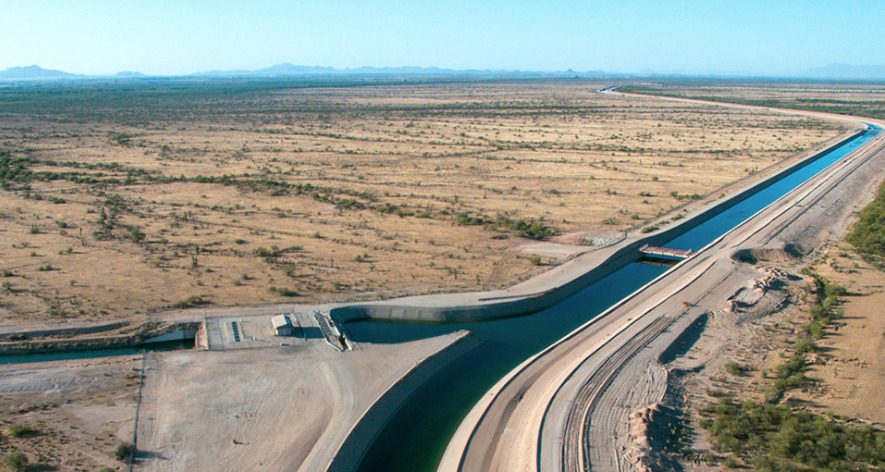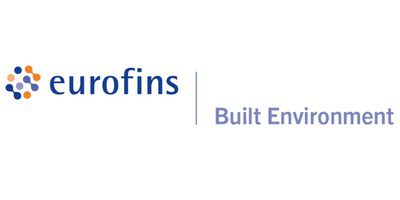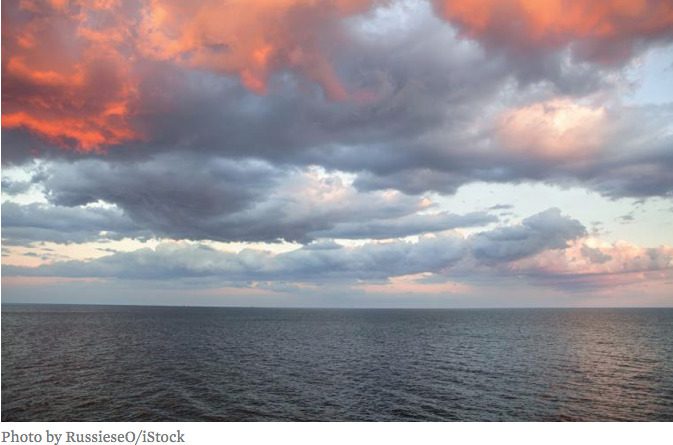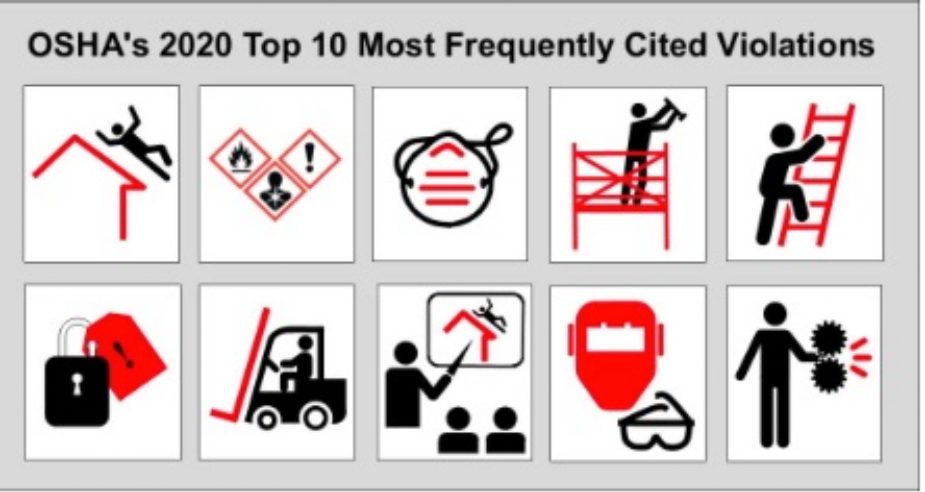Daniel Salzler No. 1132
EnviroInsight.org Five Items January 13, 2022
—————Feel Free To Pass This Along To Others——————
If your watershed is doing something you would like others to know about, or you know of something others can benefit from, let me know and I will place it in this Information newsletter.If you want to be removed from the distribution list, please let me know.Please note that all meetings listed are open. Enhance your viewing by downloading the pdf file to view photos, etc. The attached is all about improving life in the watershed and expanding your knowledge. If you want to be removed from the distribution list, please let me know. Please note that all meetings listed are open.
Enhance your viewing by downloading the attached pdf file to view photos, etc.
The attached is all about improving life in the watershed.
Read this newsletter at EnviroInsight.org
- Arizona’s Water.
Arizonan’s should follow these water related stories in 2022.

As water issues go, 2021 was a “banner year” in terms of media coverage and overall general interest. Now that 2022 has arrived – and we’re officially in a Tier 1 Colorado River shortage – it might be a good time to refresh your memory on a few stories from 2021 that certainly carry over into this new year.
The biggest news story (after the pandemic, of course) was the declaration of the first-ever Tier 1 shortage on the Colorado River. Need a refresher? Take a look at “Colorado River shortage: Here’s what you need to know.”

One story that seemed especially helpful as we worked through the ins-and-outs of what a shortage means was “A matter of priorities.” This “explainer” steps through CAP’s priority system, showing who was first affected by a shortage. It was even used by CNN to explain the situation!
We’ve planned for shortage for quite some time – and we’ve also planned for a future in a hotter and drier environment. This includes partnerships aimed at additional conservation and potential new supplies. With that in mind, take a look at:
- Water agencies announce partnership to invest $200 million in conservation efforts to bolster Colorado River’s Lake Mead under 500+ Plan
- Collaborative partnerships focus on cost-effective solution to allow agriculture to thrive while conserving Colorado River Water
- CAP and ADWR partner with Metropolitan Water District of Southern California to advance development of large-scale recycled water project
And finally, you’ll want to keep your eye on the $1.2 trillion bipartisan infrastructure package: What it means for CAP, to keep tabs on the $8.3 billion allocated to the U.S. Bureau of Reclamation during the next 5 years for Western water infrastructure.
Source:https://knowyourwaternews.com/six-2021-stories-to-follow-in-2022/
2. Introduction to Bacteriology
Thursday, January 13, 2022
This 1.5 hour webinar starts at: 9:00 am (PT) | 12:00 pm (ET)
Description:
You will learn about the background and role of bacteria in regards to human health effects, bacterial sampling, and analytical methods. This webinar is highly recommended if you need to implement a bacterial sampling program.
Topics include:
• Introduction to bacteria
• Distribution and role of bacteria in the natural environment
• Bacteria that commonly colonize people
• Health effects of bacteria
• Sampling and analytical methods for bacteria
• Legionella and Legionnaires’ disease
• MRSA in health care settings
• Sewage: evaluating hazards
Presenter:
Dr. Harriet Burge
Director of Aerobiology
Eurofins Built Environment EMLab P&K
[Editorial Comment: Dr. Burge is a premier bacteriologist with unparralled knowledge in her field]

Introduction to Bacteriology
| Thu, Jan 13, 2022 10:00 AM – 11:30 AM MST |
Show in My Time Zone
Summary:
You will learn about the background and role of bacteria in regards to human health effects, bacterial sampling, and analytical methods. This webinar is highly recommended if you need to implement a bacterial sampling program.
Topics include:
• Introduction to bacteria
• Distribution and role of bacteria in the natural environment
• Bacteria that commonly colonize people
• Health effects of bacteria
• Sampling and analytical methods for bacteria
• Legionella and Legionnaires’ disease
• MRSA in health care settings
• Sewage: evaluating hazards
Instructor: Dr. Harriet Burge, Eurofins EMLab P&K’s Director of Aerobiology.
Dr. Harriet Burge is widely considered the leading expert in bioaerosols and helped pioneer the field more than 30 years ago. She developed and ran the aerobiology program at the Harvard School of Public Health for 10 years, and has served on many National Academy of Sciences committees on bioaerosols. Dr. Burge also served on the Board of Directors of the New England Chapter of the Asthma and Allergy Foundation.
Register at https://register.gotowebinar.com/register/4737797123754568206
3.

3. Ten Ocean Issues You’ll Be Hearing About in 2022
From deep-sea mining to clashes over migrants, it’s shaping up to be a year of blue issues
By David Helvarg | Jan 6 2022
The ocean is in trouble, and people know it. The last major survey on public attitudes, conducted two years ago, found 73 percent of Americans thought the ocean’s condition had worsened in the previous decade. Asked what the major threats are, however, they tended to focus on a few familiar issues such as plastic pollution (96 percent), offshore oil drilling (74 percent), and industrial overfishing (70 percent).
Yet many other problems trouble our blue planet. Some—rising sea levels, more frequent coastal flooding, and intensified hurricanes—break down the distinction between climate and ocean issues. Here are 10 further emerging blue issues that you’ll be seeing in the news in 2022.
Deep Sea Mining
Since the 1970s, there’s been talk of mining the potato-size, mineral-rich nodules that cover large swaths of the deep ocean. But only recently has the industrial-scale mining technology, like underwater bulldozers and suction-hose robots, evolved far enough to make it financially feasible. The UN’s International Seabed Authority has already granted 18 exploration permits and is supposed to set regulations for commercial exploitation by 2023. Some of the mining companies argue that “harvesting” ocean minerals is essential for green technologies like electric cars and storage batteries for wind and solar power. But hundreds of scientists and ocean explorers have called for a moratorium on mining until we have a better understanding of deep-ocean ecosystems, their living denizens, and their role in the carbon cycle. A number of companies including Google, Volvo, BMW, and Samsung have joined in the call for a moratorium, saying they will not purchase any deep-sea minerals until the potential impacts of the mining are known.
Offshore wind
With the Biden administration supporting a plan to develop 30 gigawatts of offshore wind by 2030 (enough to power over 22 million homes), the first large wind projects have begun going through the Interior Department’s permitting process, including public hearings. There’s now a real possibility of seeing offshore energy production quickly shift from oil and gas platforms in the Gulf of Mexico to offshore wind turbines in the Mid-Atlantic, with its shallow, gently sloping continental shelf, strong offshore winds, and close access to large urban consumer energy markets. Opposition to the plans ranges from impacts on the fishing industry and migratory whales to coastal habitat being altered by fabrication facilities, ports, and the onshoring of cables. Also, going back to a turn-of-the-21st-century battle over placing wind turbines off Cape Cod, there is deep suspicion of industrialization of the ocean by some coastal residents, whose fear is less NIMBY than NOBO—“Not On My Bay or Ocean.”
Marine heat waves
Extreme ocean warming of 4°F or more above normal has become common and extensive worldwide in recent years. The North Pacific “warm blob” lasted from 2013 to 2016 followed by additional marine heat waves in 2017, 2019, and 2020. These ocean hot spots contributed to toxic algal blooms that stretched from Alaska to Baja California, Mexico. In 2021, a coastal heat wave in the Northwest (with temperatures in Portland reaching 116°F) contributed to the die-off of billions of intertidal creatures. Marine heat waves have also led to mass die-offs of crabs and kelp forests and the shut down of commercial fisheries. Warming waters off Florida have supercharged toxic algae, killing billions of fish, turtles, and marine mammals, sickening people and damaging the economy.
Saltwater intrusion
The flooding of low-lying coastal areas during storm surges and king tides is the most visible form of saltwater intrusion. But it also occurs when warming, rising ocean water infiltrates freshwater aquifers and coastal groundwater. This is happening now more rapidly than at any point in recent history. Saltwater intrusion pushing up from below accounts for the “sunny-day flooding” that’s now a common occurrence in Miami Beach, Charleston, Hampton Roads, Annapolis, and other coastal towns. It has also led to populations being displaced due to freshwater contamination and root rot of crops such as sugar and coconut in island nations and territories including Fiji, Tonga, and French Polynesia.
Saltwater is also highly corrosive to metal and cement and could impact coastal development in the US, particularly in Florida with its highly porous limestone ground. If a federal accident report from the National Institute of Standards and Technology finds saltwater intrusion contributed to the deadly July 2021 collapse of a condominium in Surfside, Florida, it could have massive implications for millions of residents of the Sunshine State.
Migrant and military conflicts
The increasing number of climate refugees and the deaths at sea of migrants trying to raft to Greece from Turkey, to Italy from North Africa, and across the English Channel reflects a global problem not seen since some 800,000 “boat people” took to the sea from Vietnam in the mid-1970s. Unlike the pirate problem off the Horn of Africa in the early 2000s, which was largely resolved by a cooperative approach among the navies of many nations, at-sea migrant flows are generating increased conflict. These include confrontations between national coast guards trying to block migrants and nonprofit groups trying to provide aid to the migrants.
At the same time, increasing competition for ocean resources like oil, minerals, fish, and trade routes is increasing the potential for military conflicts at sea. New flash points include the Arctic Ocean, where Russia is building up its military presence in newly ice-free waters. In the South China Sea, the People’s Republic of China, with a rapidly expanding naval presence, is making claims on the exclusive economic zones of the Philippines, Brunei, Malaysia, Taiwan, and Vietnam. To strengthen its claims, China has destroyed a number of coral reefs and atolls to build up artificial islands, rejecting a World Court ruling against the practice. Meanwhile, the US, working with regional allies, is stepping up its military presence in the western Pacific and the South China Sea.
Global decline of coral reefs, kelp forests, and phytoplankton
Recent studies have found that half the world’s coral has been lost since 1950. Phytoplankton has plummeted by 40 percent in the same period, and kelp forests are declining by 2 percent a year.
Decarbonizing ports
Plans for the decarbonization of major ports and shipping hubs got a boost from the LA/Long Beach port complex, which showed that it could economically reduce port pollution and carbon emissions over 70 percent in a few years. This has led to a global climate initiative among major ports. Industry influence over the UN’s International Maritime Organization, however, has delayed any rapid transition off fossil fuels in the commercial shipping fleet.
Desalinization
The push for ocean desalinization as a source of water for drinking and irrigation is growing. Aside from the high costs associated with “desal” plants, the major challenges to greening these systems include their intense power demand, “entrainment” (or capture of marine wildlife in their intake pipes), and thermal and saline pollution in their outflow.
Sea life on the move
Fish and other marine wildlife migration from the warming equator toward the poles driven by climate change is already impacting a number of commercial fisheries. This in turn is leading to growing conflict among fishing groups and nations.
Aquaculture
The growth of offshore aquaculture is another area to watch. One fast-growing sector—expected to reach $85 billion in value in a few years—is the farming of seaweed for food, animal feed, and bioplastics. Seaweed can also be used to sequester atmospheric carbon dioxide.
4. OSHA’s Top 10 Citations Most Frequently Cited Standard Violations List and Programs to Prevent Workplace Injuries, Illnesses, Fatalities and Costly Noncompliance Penalties for Fiscal Year 2020 (Oct. 1, 2019, to Sept. 30, 2020).
The following is a list of the top 10 most frequently cited standards following inspections of worksites by federal OSHA. OSHA publishes this list to alert employers about these commonly cited standards so they can take steps to find and fix recognized hazards addressed in these and other standards before OSHA shows up. Far too many preventable injuries and illnesses occur in the workplace.

- Fall Protection, construction (29 CFR 1926.501) [related OSHA Safety and Health Topics page]
- Hazard Communication Standard, general industry (29 CFR 1910.1200) [related OSHA Safety and Health Topics page]]
- Respiratory Protection, general industry (29 CFR 1910.134) [related OSHA Safety and Health Topics page]
- Scaffolding, general requirements, construction (29 CFR 1926.451) [related OSHA Safety and Health Topics page]
- Ladders, construction (29 CFR 1926.1053) [related OSHA Safety and Health Topics page]
- Control of Hazardous Energy (lockout/tagout), general industry (29 CFR 1910.147) [related OSHA Safety and Health Topics page]
- Powered Industrial Trucks, general industry (29 CFR 1910.178) [related OSHA Safety and Health Topics page]
- Fall Protection–Training Requirements (29 CFR 1926.503) [related OSHA Safety and Health Topics page]
- Eye and Face Protection (29 CFR 1926.102) [related OSHA Safety and Health Topics page]
- Machinery and Machine Guarding, general requirements (29 CFR 1910.212) [related OSHA Safety and Health Topics page]
- To search the top violations of an industry with a specific NAICS code, see https://www.osha.gov/pls/imis/citedstandard.html
- To search and view the industry profile for violations of any specific OSHA standard, see https://www.osha.gov/pls/imis/industryprofile.html
If you employ people, you are responsible for providing safe working conditions for all of your employees. PLEASE BE CAREFUL OUT THERE!
5. Tucson NewsNet Daily Digest – A Service of the City of Tucson
City of Tucson departments work every day to serve the citizens of Tucson. Here is a look at some of the many statistics of the work performed during the 2021 pandemic calendar year. We hope you enjoy this “By the Numbers” special edition of NewsNet.
• 27.4 billion gallons of potable water delivered
• 152,292 individual water quality sample results collected
• 21,605 fire hydrants served and maintained by Tucson Water
• 9 wells drilled, lined, or rehabbed
• 4.4 billion gallons of reclaimed water delivered
• 3,866 customers received conservation rebates
• 41.6 million gallons of water saved due to rebate/incentive programs
• 27,000+ students reached by water conservation education programs
ENVIRONMENTAL & GENERAL SERVICES DEPARTMENT:
• 11,076,000 residential trash and recycling containers collected for the year
• 19,000 tons (38 million pounds) of debris collected by Brush and Bulky crews
• 700,000 tons of solid waste received at Los Reales Sustainability Campus (landfill)
• 204,800 pounds of household hazardous waste collected
• 55,065 work orders completed
• 9,016 clean-ups of graffiti
• 2,700 fleet units managed and maintained
• 7 fueling facilities dispensing more than 1.5 million gallons of liquid fuel and an on-site CNG
plant dispensing more than 1.8 million gasoline gallon equivalent (GGEs) of compressed
natural gas (CNG) for all City vehicles
To read more, go to https://content.govdelivery.com/accounts/AZTUCSON/bulletins/3052c92
Copyright: 2022 EnviroInsight.org
